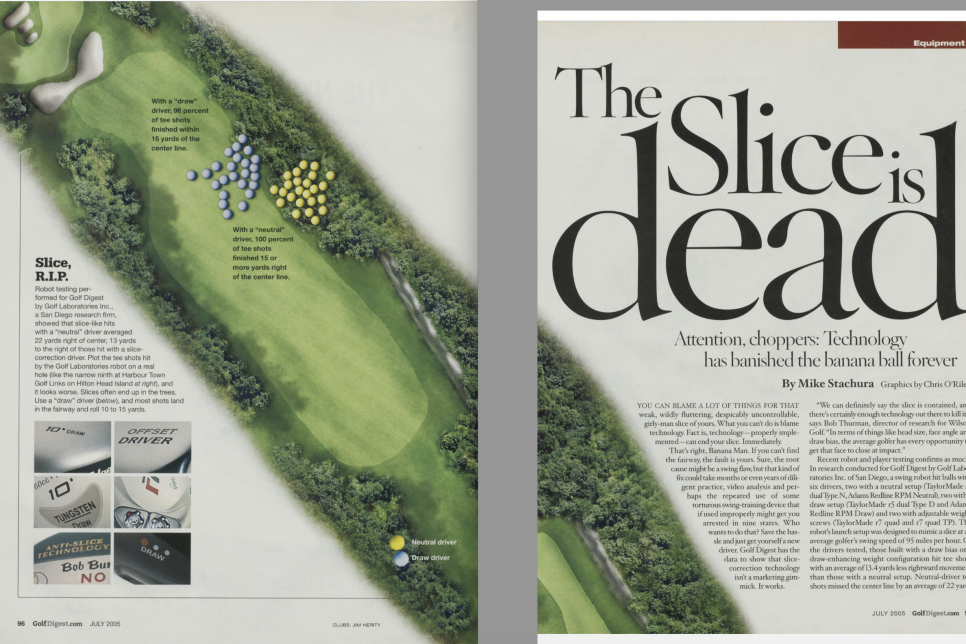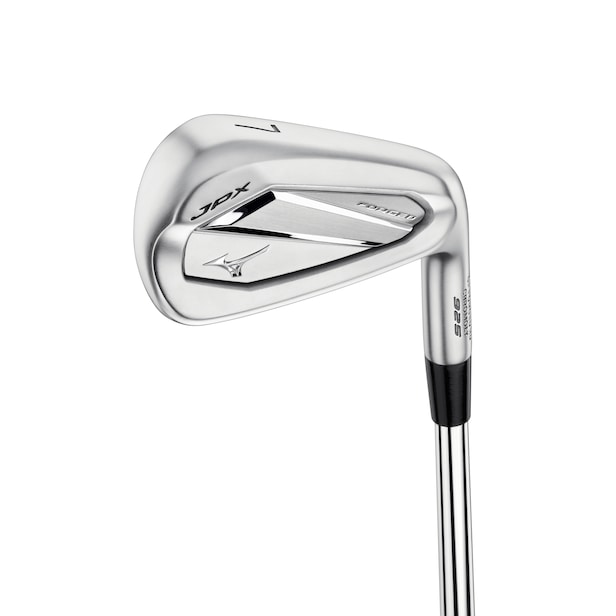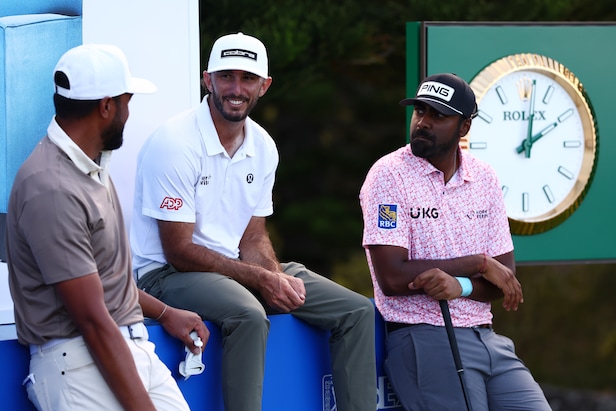Can a “draw” driver overdo it on fixing your slice? – Australian Golf Digest

- by Admin
- September 2, 2024

Question: If I’m a slicer, and I set my driver to a “closed face” position, won’t that simply make me pull shots left?
Answer: This is one of those questions that pains us because, frankly, it reminds us that we’ve been around too long. In July 2005, back when Amazon was trading at $2.36 or $175 less than its current price, our team at Golf Digest made it unequivocally clear that, as the story headline so elegantly stated, “The Slice is Dead.” Despite all our compelling evidence, however, it seems the slice persists.
What should be compelling, and comforting, with regard to this specific question, is that killing the slice over the last two decades has become even more targeted and efficient. To be fair to your question, if the clubface is closed at impact and the swing path moves toward the left (on a right-handed golfer), shots will go farther left. And while a closed face angle is still employed to some degree (maybe a degree or two here or there, usually nothing that aggressive), the best solutions out there employ a number of elements to get your swing and the results back on the proper path.
Remember that when the ball goes right (for a right-handed slicer), it’s because the face is open to the path of your swing. A driver with a face that’s closed isn’t going to necessarily change your swing, but it can make the face less open than it’s typically been. If your swing path is an over-the-top motion that comes across the ball from left to right, then theoretically you may get to a place where you accidentally over-correct and the ball will travel more left. Our data shows that even in that scenario, the pull still produces the majority of shots landing within the boundaries of a typical fairway. Should your shot be particularly pulled (as in an extremely over the top cutting across the ball type of move), such a miss wouldn’t have been in the fairway with a neutral, or square-faced driver, either.
But we think you’re overly concerned with face angle. We think the best anti-slice drivers today incorporate multiple elements to make the slice less likely. The biggest is the amount of mass that can be positioned deep and in the heel side. A generation ago, drivers might have been able to push 10 or 12 grams into the heel to shift the center of gravity closer to the hosel. Now, it’s 20 or even 30 grams. This creates more potential draw spin or what’s known as gear effect. With a heel-weighted driver, there’s going to be more area of the face that’s on the toe side of the center of gravity. The more that the impact point occurs toward the toe side of the center of gravity, the more shots are going to leave with draw spin. At the same time, heel weighting makes it easier for a golfer with a slice to bring the face to a square position at impact. How? By making the toe side of the driver lighter, it is more likely the toe will be easier to rotate from an open to a square position at impact. That same effect can be further enhanced by offset, but we realize that look can be an adjustment. (Our answer: The beautiful look of where the golf ball is going should matter more than assuaging your aesthetic muse at address.)
Second, most anti-slice drivers also feature a more upright lie angle than standard models, that further encourages a swing path that comes at the ball from the inside rather than cuts across the ball from the outside. A slightly shorter shaft could help there, as well.
Third, there’s increasing research on how lightweight shafts and overall lighter weights make things easier for players to square up. And while traditionally we’ve thought about how a shaft with a more flexible tip section might help players get the head back to square, TaylorMade’s anti-slice research suggests a lighter and marginally tip stiffer shaft might help some moderate to faster swing speed slicers get the right amount of face closure at impact.
The upshot of your concern? Your pull slice still features a consistent open clubface at impact. That’s why you slice it. A driver with a slightly closed face isn’t going to be a problem, but if it’s bothering you, aim down the left third of the fairway, instead of down the left rough line. More importantly, there are so many elements combating the slice that the dreaded right ball is more dead than ever. Here are five of our favorites to put your slice to sleep:
Callaway Paradym AI Smoke Max D Cleveland Launcher XL2 Draw Cobra Air-X Ping G430 SFT TaylorMade Qi10 Max
This article was originally published on golfdigest.com
The Latest News
-
January 6, 2025Puma releases new Ignite Elevate 2 and Ignite Elevate X shoe – Australian Golf Digest
-
January 6, 2025Max Homa perfectly summed up what it was like getting dusted by record-low scoring at Kapalua – Australian Golf Digest
-
January 6, 2025Mizuno JPX925 Forged and Forged Black irons: what you need to know – Australian Golf Digest
-
January 6, 2025Cruz Hewitt takes expectation and Nick Kyrgios jokes in his stride ahead of Australian Open debut
-
January 6, 20255 things you should watch for during the TGL’s debut event – Australian Golf Digest




